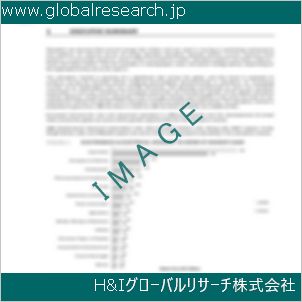Table of Contents
1 Industry Overview of 2-Pentanol
1.1 Definition and Specifications of 2-Pentanol
1.1.1 Definition of 2-Pentanol
1.1.2 Specifications of 2-Pentanol
1.2 Classification of 2-Pentanol
1.3 Applications of 2-Pentanol
1.3.1 Nuclear Application
1.3.2 Non-Nuclear Application
1.4 Industry Chain Structure of 2-Pentanol
1.5 Industry Overview and Major Regions Status of 2-Pentanol
1.5.1 Industry Overview of 2-Pentanol
1.5.2 Global Major Regions Status of 2-Pentanol
1.6 Industry Policy Analysis of 2-Pentanol
1.7 Industry News Analysis of 2-Pentanol
2 Manufacturing Cost Structure Analysis of 2-Pentanol
2.1 Raw Material Suppliers and Price Analysis of 2-Pentanol
2.2 Equipment Suppliers and Price Analysis of 2-Pentanol
2.3 Labor Cost Analysis of 2-Pentanol
2.4 Other Costs Analysis of 2-Pentanol
2.5 Manufacturing Cost Structure Analysis of 2-Pentanol
2.6 Manufacturing Process Analysis of 2-Pentanol
3 Technical Data and Manufacturing Plants Analysis of 2-Pentanol
3.1 Capacity and Commercial Production Date of Global 2-Pentanol Major Manufacturers in 2023
3.2 Manufacturing Plants Distribution of Global 2-Pentanol Major Manufacturers in 2023
3.3 R&D Status and Technology Source of Global 2-Pentanol Major Manufacturers in 2023
3.4 Raw Materials Sources Analysis of Global 2-Pentanol Major Manufacturers in 2023
4 Capacity, Production and Revenue Analysis of 2-Pentanol by Regions, Types and Manufacturers
4.1 Global Capacity, Production and Revenue of 2-Pentanol by Regions 2019-2024
4.2 Global and Major Regions Capacity, Production, Revenue and Growth Rate of 2-Pentanol 2019-2024
4.3 Global Capacity, Production and Revenue of 2-Pentanol by Types 2019-2024
4.4 Global Capacity, Production and Revenue of 2-Pentanol by Manufacturers 2019-2024
5 Price, Cost, Gross and Gross Margin Analysis of 2-Pentanol by Regions, Types and Manufacturers
5.1 Price, Cost, Gross and Gross Margin Analysis of 2-Pentanol by Regions 2019-2024
5.2 Price, Cost, Gross and Gross Margin Analysis of 2-Pentanol by Types 2019-2024
5.3 Price, Cost, Gross and Gross Margin Analysis of 2-Pentanol by Manufacturers 2019-2024
6 Consumption Volume, Consumption Value and Sale Price Analysis of 2-Pentanol by Regions, Types and Applications
6.1 Global Consumption Volume and Consumption Value of 2-Pentanol by Regions 2019-2024
6.2 Global and Major Regions Consumption Volume, Consumption Value and Growth Rate of 2-Pentanol 2019-2024
6.3 Global Consumption Volume and Consumption Value of 2-Pentanol by Types 2019-2024
6.4 Global Consumption Volume and Consumption Value of 2-Pentanol by Applications 2019-2024
6.5 Sale Price of 2-Pentanol by Regions 2019-2024
6.6 Sale Price of 2-Pentanol by Types 2019-2024
6.7 Sale Price of 2-Pentanol by Applications 2019-2024
6.8 Market Share Analysis of 2-Pentanol by Different Sale Price Levels
7 Supply, Import, Export and Consumption Analysis of 2-Pentanol
7.1 Supply, Consumption and Gap of 2-Pentanol 2019-2024
7.2 Global Capacity, Production, Price, Cost, Revenue, Supply, Import, Export and Consumption of 2-Pentanol 2019-2024
7.3 USA Capacity, Production, Price, Cost, Revenue, Supply, Import, Export and Consumption of 2-Pentanol 2019-2024
7.4 EU Capacity, Production, Price, Cost, Revenue, Supply, Import, Export and Consumption of 2-Pentanol 2019-2024
7.5 China Capacity, Production, Price, Cost, Revenue, Supply, Import, Export and Consumption of 2-Pentanol 2019-2024
7.6 Japan Capacity, Production, Price, Cost, Revenue, Supply, Import, Export and Consumption of 2-Pentanol 2019-2024
8 Major Manufacturers Analysis of 2-Pentanol
8.1 Manufacturer One
8.1.1 Company Profile
8.1.2 Product Picture and Specifications
8.1.2.1 Type I
8.1.2.2 Type II
8.1.2.3 Type III
8.1.3 Capacity, Production, Price, Cost, Gross and Revenue
8.1.4 Contact Information
8.2 Manufacturer Two
8.2.1 Company Profile
8.2.2 Product Picture and Specifications
8.2.2.1 Type I
8.2.2.2 Type II
8.2.2.3 Type III
8.2.3 Capacity, Production, Price, Cost, Gross and Revenue
8.2.4 Contact Information
8.3 Manufacturer Three
8.3.1 Company Profile
8.3.2 Product Picture and Specifications
8.3.2.1 Type I
8.3.2.2 Type II
8.3.2.3 Type III
8.3.3 Capacity, Production, Price, Cost, Gross and Revenue
8.3.4 Contact Information
8.4 Manufacturer Four
8.4.1 Company Profile
8.4.2 Product Picture and Specifications
8.4.2.1 Type I
8.4.2.2 Type II
8.4.2.3 Type III
8.4.3 Capacity, Production, Price, Cost, Gross and Revenue
8.4.4 Contact Information
8.5 Manufacturer Five
8.5.1 Company Profile
8.5.2 Product Picture and Specifications
8.5.2.1 Type I
8.5.2.2 Type II
8.5.2.3 Type III
8.5.3 Capacity, Production, Price, Cost, Gross and Revenue
8.5.4 Contact Information
…
9 Marketing Trader or Distributor Analysis of 2-Pentanol
9.1 Marketing Channels Status of 2-Pentanol
9.2 Traders or Distributors with Contact Information of 2-Pentanol by Regions
9.3 Ex-work Price, Channel Price and End Buyer Price Analysis of 2-Pentanol
9.4 Regional Import, Export and Trade Analysis of 2-Pentanol
10 Industry Chain Analysis of 2-Pentanol
10.1 Upstream Major Raw Materials Suppliers Analysis of 2-Pentanol
10.1.1 Major Raw Materials Suppliers with Contact Information Analysis of 2-Pentanol
10.1.2 Major Raw Materials Suppliers with Supply Volume Analysis of 2-Pentanol by Regions
10.2 Upstream Major Equipment Suppliers Analysis of 2-Pentanol
10.2.1 Major Equipment Suppliers with Contact Information Analysis of 2-Pentanol
10.2.2 Major Equipment Suppliers with Product Pictures Analysis of 2-Pentanol by Regions
10.3 Downstream Major Consumers Analysis of 2-Pentanol
10.3.1 Major Consumers with Contact Information Analysis of 2-Pentanol
10.3.2 Major Consumers with Consumption Volume Analysis of 2-Pentanol by Regions
10.4 Supply Chain Relationship Analysis of 2-Pentanol
11 Development Trend of Analysis of 2-Pentanol
11.1 Capacity, Production and Revenue Forecast of 2-Pentanol by Regions and Types
11.1.1 Global Capacity, Production and Revenue of 2-Pentanol by Regions 2024-2029
11.1.2 Global and Major Regions Capacity, Production, Revenue and Growth Rate of 2-Pentanol 2024-2029
11.1.3 Global Capacity, Production and Revenue of 2-Pentanol by Types 2024-2029
11.2 Consumption Volume and Consumption Value Forecast of 2-Pentanol by Regions, Types and Applications
11.2.1 Global Consumption Volume and Consumption Value of 2-Pentanol by Regions 2024-2029
11.2.2 Global and Major Regions Consumption Volume, Consumption Value and Growth Rate of 2-Pentanol 2024-2029
11.2.3 Global Consumption Volume and Consumption Value of 2-Pentanol by Types 2024-2029
11.2.4 Global Consumption Volume and Consumption Value of 2-Pentanol by Applications 2024-2029
11.3 Supply, Import, Export and Consumption Forecast of 2-Pentanol
11.3.1 Supply, Consumption and Gap of 2-Pentanol 2024-2029
11.3.2 Global Capacity, Production, Price, Cost, Revenue, Supply, Import, Export and Consumption of 2-Pentanol 2024-2029
11.3.3 USA Capacity, Production, Price, Cost, Revenue, Supply, Import, Export and Consumption of 2-Pentanol 2024-2029
11.3.4 EU Capacity, Production, Price, Cost, Revenue, Supply, Import, Export and Consumption of 2-Pentanol 2024-2029
11.3.5 China Capacity, Production, Price, Cost, Revenue, Supply, Import, Export and Consumption of 2-Pentanol 2024-2029
11.3.6 Japan Capacity, Production, Price, Cost, Revenue, Supply, Import, Export and Consumption of 2-Pentanol 2024-2029
12 New Project Investment Feasibility Analysis of 2-Pentanol
12.1 New Project SWOT Analysis of 2-Pentanol
12.2 New Project Investment Feasibility Analysis of 2-Pentanol
13 Conclusion of the Global 2-Pentanol (CAS 6032-29-7) Industry 2024 Market Research Report
| ※参考情報 第2アミルアルコール(2-ペンタノール)は、有機化合物の一つで、化学式はC5H12Oです。CAS番号は6032-29-7で、通常は無色の液体として存在します。アルコール類に分類されるこの化合物は、特に2位の炭素に水酸基(-OH)が結合しているため、「第2アミルアルコール」と呼ばれています。この名称は、炭素骨格の構造とアルコール基の位置を示すものです。 特徴としては、2-ペンタノールは沸点が約102℃、融点が約-79℃で、相対的に高い極性を持ちます。このため、さまざまな溶媒に溶けやすく、特に水やエタノールとの相溶性が良好です。また、強い臭気や刺激的な香りを持つことも特長の一つであり、特に高濃度では人体に対して刺激を与える可能性があります。 2-ペンタノールにはいくつかの異性体が存在しますが、特に重要なのは1-ペンタノール、3-ペンタノール、そしてそのエチル誘導体のアミルアルコールです。異性体の中でも、2-ペンタノールはその化学的特性や反応性の面で特異な役割を果たしています。 用途に関しては、2-ペンタノールは様々な分野で活用されています。主な用途の一つとして、溶媒としての利用があります。特に、合成化学において反応溶媒や化学合成中間体としての役割を果たします。また、有機合成においては、アルコール反応、エステル化反応、脱水反応等に用いられることが多いです。 さらに、香料産業においても利用されることがあり、特定の香りを持つことから、香料成分の一部として使用されます。また、プラスチックや樹脂の製造プロセスにおいても、その化学的特性から選ばれる場合があります。これに伴い、工業的用途も視野に入れ、さらなる需要の拡大が期待されています。 関連技術としては、2-ペンタノールの合成に関する技術が挙げられます。一般的な合成方法としては、直鎖アルカンからの水酸化反応、またはカスカデ的な触媒反応による合成が行われています。このプロセスでは、反応条件の最適化、触媒の選定、温度や圧力の制御が重要な要素となります。 近年の研究では、2-ペンタノールのバイオマスからの製造が注目されています。再生可能資源からの合成ルートが開発されることで、環境負荷の低減が期待されています。これは、持続可能な化学産業に向けた動きとして、重要なテーマとなっています。 2-ペンタノールは、現代の化学工業における多様な機能を持った化合物ですが、その利用には注意が必要です。健康や環境への影響を考慮し、安全な取り扱いや使用方法が求められています。これに伴い、安全データシート(SDS)の遵守や、作業場での適切な換気、個人用保護具の使用などが推奨されます。 総じて、第2アミルアルコールは多岐にわたる分野で利用される重要な化合物であり、今後もその用途や合成方法の開発が期待される素材です。特に持続可能な開発の観点から、再生可能原料を使用した新たな合成技術の研究が進められ、より環境に優しい合成方法が模索されています。化学の発展とともに、2-ペンタノールの利用が広がることが期待されます。 |
❖ 免責事項 ❖
http://www.globalresearch.jp/disclaimer












